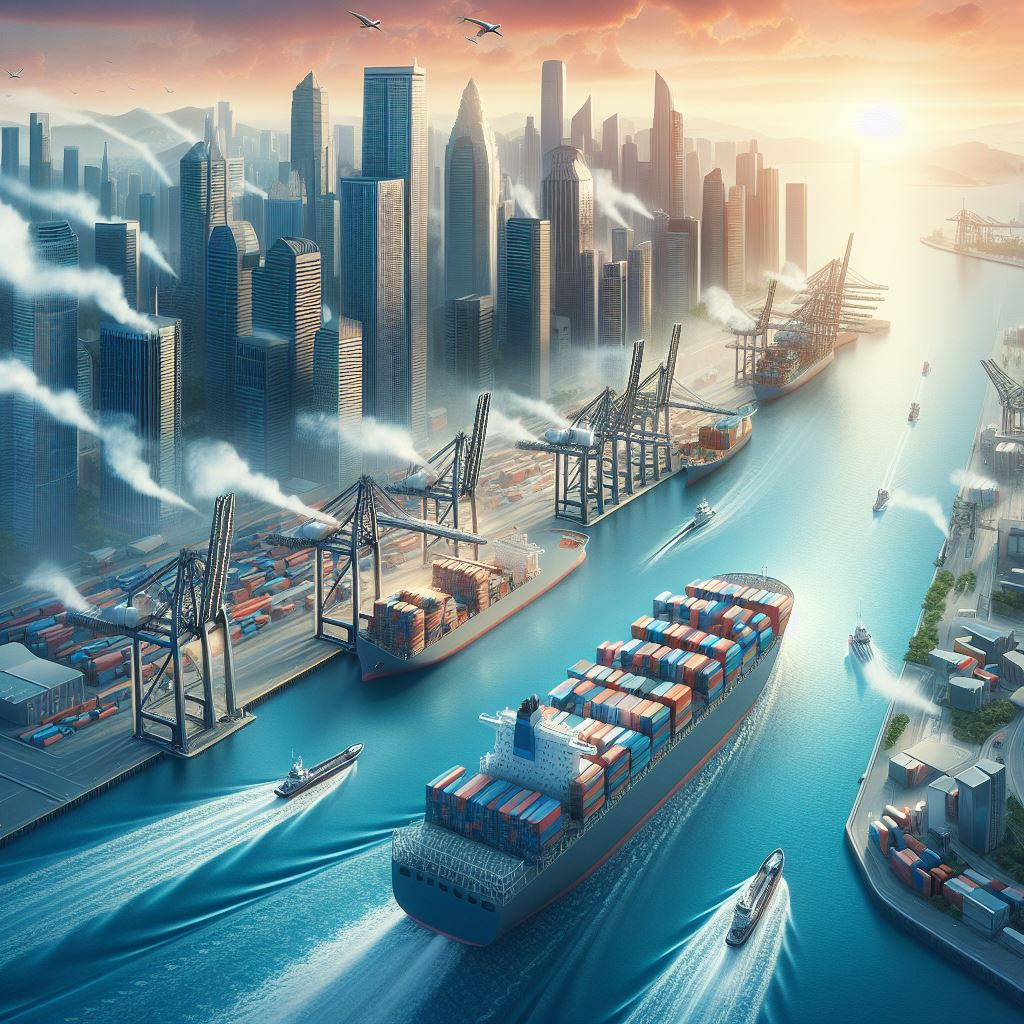2023 witnessed significant strides toward achieving long-term emissions targets, driven by a slew of regulations and advancements in vessel ordering, technology, and sustainable fuels.
In a landmark year for the maritime sector, 2023 witnessed significant strides toward achieving long-term emissions targets, driven by a slew of regulations and advancements in vessel ordering, technology, and sustainable fuels.
As the global push for decarbonization gains momentum, the industry is at a crossroads, evaluating options amid newfound clarity on emissions reduction targets, carbon pricing, and performance measures.
Regulatory Landscape Takes Shape
At the International Maritime Organisation’s (IMO) MEPC 80 in July, a revised greenhouse gas (GHG) emissions reduction strategy was agreed upon, aiming to phase out GHG emissions by 2050.
The first indicative checkpoint, set for 2030, targets a 20%, striving for 30%, reduction in total emissions based on 2008 figures, accompanied by a push for zero- or near-zero carbon fuel use representing 5%, striving for 10%, of total shipping energy use.
Simultaneously, the EU implemented new rules facilitating shipping’s inclusion in the Emissions Trading System (ETS), introducing carbon pricing on voyages to and from European Economic Area (EEA) ports from 2024.
Vessel Orders and Retrofits Surge
With regulatory frameworks now in place, the dynamics of ship ordering, technology development, and fuel supply are undergoing a rapid transformation. In 2023, 143 new construction orders for methanol-capable vessels were placed, a significant leap from the current 27 vessels in service. Additionally, over 100 vessels underwent methanol engine retrofits, indicating a proactive approach toward decarbonization.
The maritime industry witnessed a notable move towards ammonia engine technology maturity in 2023, with several key developments, including the commercial launch of Wärtsilä’s first ammonia four-stroke engine. Four firm orders for ammonia-fueled vessels were placed in the same year, signaling growing confidence in ammonia as a carbon-free energy carrier.
Orders for vessels powered by fossil-based alternative fuels, including LNG and LPG, surged, contributing to a 90% increase in LNG-fueled vessels and a 78% rise in LPG-fueled vessels by year-end. Onboard carbon capture is also gaining traction, with 16 retrofits contracted in 2023, highlighting the industry’s commitment to compliance and sustainability.
Alternative Fuel Readiness and Challenges
While progress is evident, realizing the IMO’s 2030 targets hinges on fuel availability and technological readiness. The Zero Carbon Fuel Monitor indicates that despite concrete developments in fuel supply, including ammonia bunkering barges and large-scale green methanol supply contracts, scaling up supply remains a challenge for many fuel candidates. The increasing acceptance of carbon capture, utilization, and storage has bolstered the viability of ‘blue’ fuels.
However, concerns about the scalability of sustainable carbon sourcing have led to downgraded readiness levels for methane and e-methanol. The challenge of minimizing emissions of unburnt methane, a potent greenhouse gas, remains a focal point of ongoing research and initiatives like MAMII.
Green Corridor Initiatives
Building on the progress of 2023, the Silk Alliance, established by the Maritime Decarbonisation Hub, envisions a strong demand for methanol and ammonia from 2030 onwards. A progress report released in November projects the need for over 3 million tonnes of clean methanol and a minimum of 280,000 tonnes of clean ammonia to meet the demands of 137 alternative-fueled ships within the Silk Alliance cluster.
The Silk Alliance is actively working on an implementation plan, evaluating cost gaps within the cluster and identifying financing mechanisms to bridge these gaps.
Projects like the Silk Alliance and MAMII, alongside industry-leading rulesets, fuel scenario research, and the classification of cutting-edge vessels and technologies, underscore Lloyd’s Register’s multifaceted commitment to supporting the maritime industry’s decarbonization ambitions in 2024 and beyond.
In a sector navigating uncharted waters of sustainability, collaboration, innovation, and regulatory compliance emerge as the guiding stars, steering the maritime industry towards a cleaner, greener future. As the world watches the industry’s journey, the winds of change propel the sector into an era of responsible and environmentally conscious seafaring.
